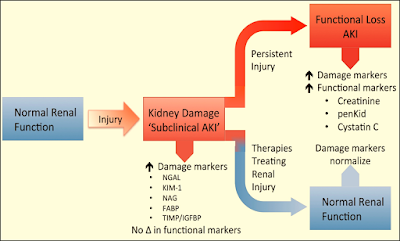Preoperative Anesthetic Evaluation of Morbid Obese Patient
Goals:
1-Obtain data regarding the patient’s medical and surgical history.
2-Optimize current physiologic function.
3-Prepare an appropriate anesthetic plan.
1-Medications:
➧ The obese person must be assessed for the use of weight-reducing substances, herbal supplements, and anorexiant drugs.
➧ Chronic use of noradrenergic and serotonergic therapy can produce hypertension, tachycardia, anxiety, psychosis, and catecholamine depletion.
➧ Catecholamine depletion can lead to profound hypotension during induction and maintenance of anesthesia, which is refractory to indirect-acting vasopressors such as ephedrine.
➧ Phenylephrine hydrochloride (Neo-Synephrine) is usually effective in reversing low blood pressure.
➧ At least two weeks of abstinence from the drugs is recommended for adequate catecholamine levels to be recovered.
2-Laboratory Tests:
➧ Complete blood cell counts: may reveal Hct as high as 65%, which can result from contracted blood volume or polycythemia associated with cardiopulmonary disease.
- Leukocytosis (greater than 11,000) is a strong predictor of risk for acute myocardial infarction independent of tobacco smoking.
➧ Arterial blood gas analysis: that compares samples taken with the patient lying supine and sitting while breathing room provides baseline values and can distinguish simple obesity from Obesity Hypoventilation Syndrome.
➧ Renal function tests and Electrolytes: may reflect abnormal glucose and potassium levels, which are indicators of insulin resistance and potentiation of myocardial irritability.
- Diuretics and certain cardiac medications can worsen electrolyte disturbances.
- Blood urea nitrogen (BUN) and creatinine levels may be elevated in response to dehydration or renal dysfunction.
➧ Liver function tests: are typically elevated in obese patients, it is due to the infiltration of the hepatocytes with triglycerides (fatty liver, liver steatosis).
- The severity of fatty infiltration may alter the pharmacologic effects of many anesthetic drugs, thereby requiring dose reductions.
➧ Coagulation studies are necessary if regional anesthesia is planned or if coagulopathy exists.
- Patients taking anticoagulants for treatment of deep vein thrombosis or atrial fibrillation may exhibit elevated prothrombin and partial thromboplastin times.
- Nonsteroidal anti-inflammatory drugs may prolong bleeding times and affect surgical hemostasis.
➧ Pulmonary function tests: for obese patients undergoing abdominal or thoracic surgery to assist with the anesthetic planning.
➧ Chest radiography: is necessary to determine the presence of cardiomegaly, pulmonary infiltrates, and evidence of COPD.
3-Cardiac Assessment:
➧ History of prior MI, presence of HTN, angina, or PVD is crucial.
➧ Drug history gives clues about the patient's coexistent diseases.
➧ When possible cardiac medications should be continued up to the morning of surgery.
➧ Exercise tolerance: elicit valuable information about the myocardial function in morbidly obese patients.
- Limitations in exercise tolerance, history of orthopnea, and paroxysmal nocturnal dyspnea may indicate left ventricular dysfunction.
➧ ECG: is essential for the determination of resting rate, rhythm, and ventricular hypertrophy or strain.
➧ Echocardiography: is useful for determining whether akinesis or wall motion abnormalities are present in the obese myocardium.
➧ Chest radiography: to identify pulmonary congestion, elevated diaphragm, and a tortuous aorta.
- The results of the radiographic study serve to guide preoperative pharmacologic and medical management (diuretics, beta-1 agonists, antibiotics).
4-Respiratory Evaluation:
➧ History of orthopnea, wheezing, sputum production, or smoking history.
➧ Recent upper respiratory infections, snoring, or sleep disturbances may indicate obstructive processes.
➧ Careful preoperative evaluation of the patient’s respiratory function identifies potential problems.
➧ A patient who becomes dyspneic and desaturates when recumbent experiences the same symptoms during induction of anesthesia in the supine position.
5-Airway Assessment:
➧ Most anesthetists use the evaluation of multiple patient physical characteristics to identify potential airway problems indicative of the unanticipated difficult airway.
➧ Patient physical characteristics that identify potential airway problems:
- Mallampati classification
- Interincisor distance
- Thyromental distance
- Head and neck extension
- Body weight and BMI
- History of difficult airway
- Length of upper incisors
- Visibility of the uvula
- Shape of the palate
- Compliance with the mandibular space and length
- Short, thick neck
- Pendulous breasts
- Hypertrophied tonsils and adenoids
- Beard
- Marginal room air pulse oximetry saturations
- Abnormal arterial blood gases
- Reduced tempormandibular and antlantooccipital joint movement
- Limited mouth opening, presence of neck or arm pain, or inability to place the head and neck into a sniffing position may indicate the need for awake fiberoptic intubation.
- Increasing neck circumference and Mallampati classification >3 have been identified as the two most important factors for morbidly obese patients.
6-Vascular Access:
➧ Venipuncture can be challenging in obese patients with excessive fat that obscures blood vessels from both visualization and palpation.
➧ Hemorrhage, hypothermia, and trauma also reduce the likelihood of accessing vessels.
➧ Ultrasound-guided central venous catheter placement may improve access and avoid iatrogenic pneumothorax.
7-Patient Education:
➧ Explanations of anticipated events during preoperative preparation: multiple venipunctures, central and arterial line insertions, awake intubation, postoperative ventilation, if needed, pain management, and protection of the patient’s privacy will relieve anxiety.
Read more ☛ Anesthetic Management of Morbid Obese Patient































